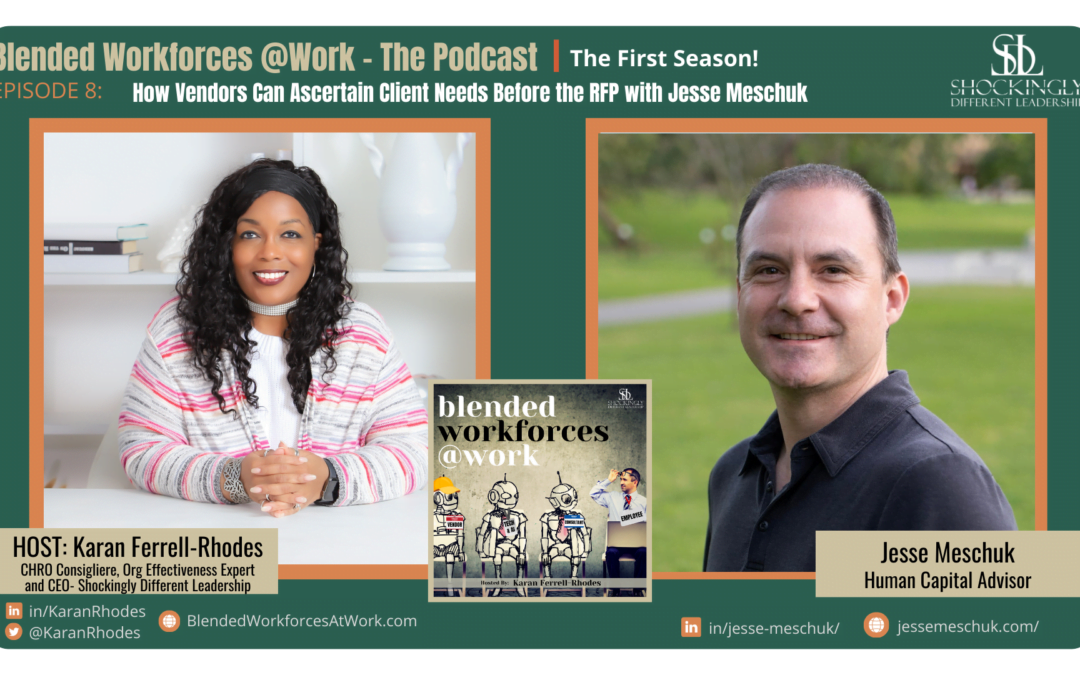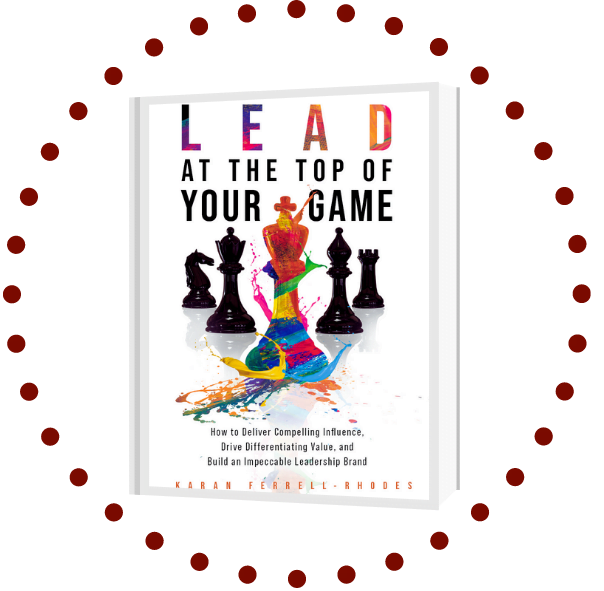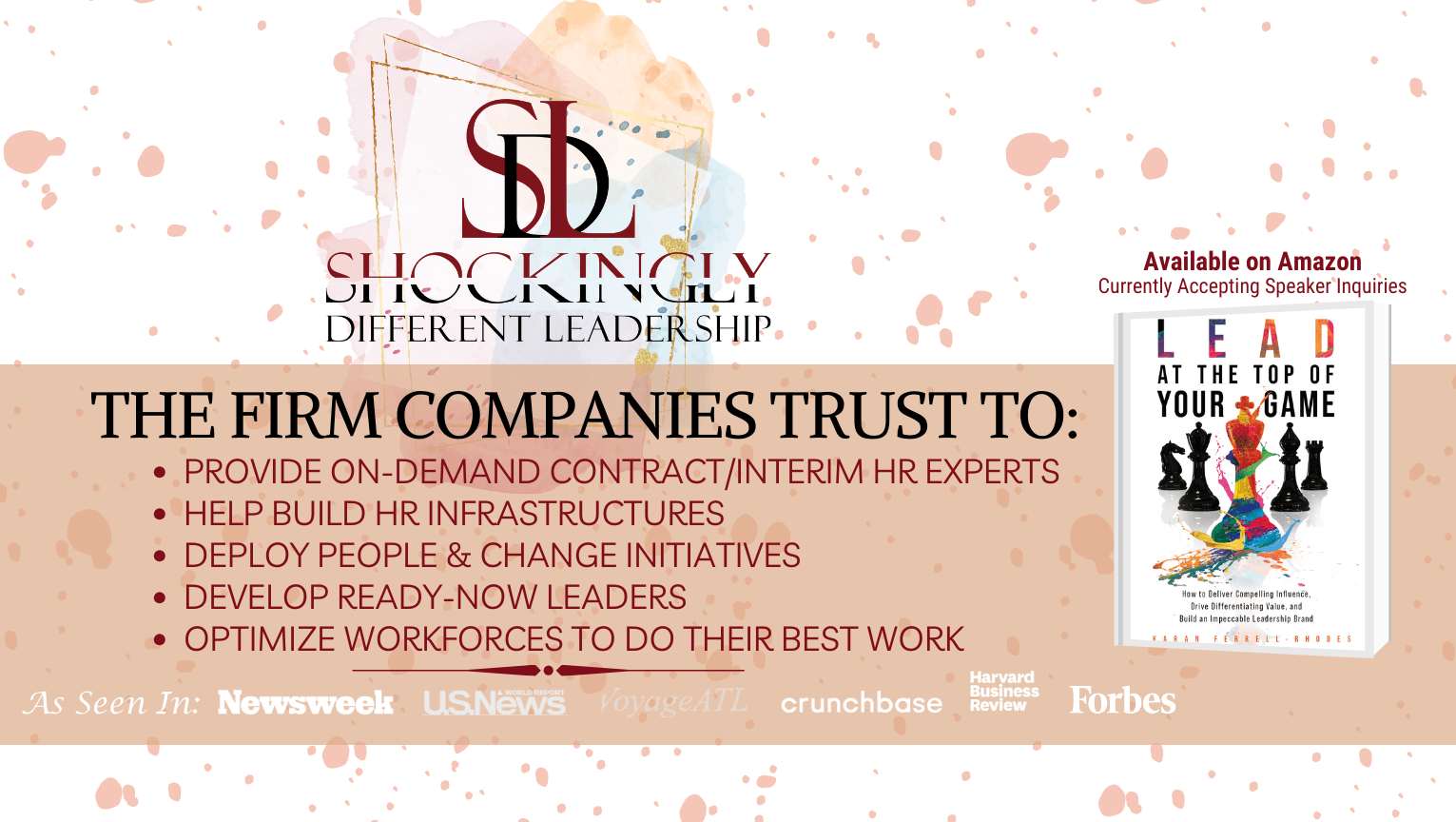IN THIS EPISODE, KARAN FERRELL-RHODES INTERVIEWS JESSE MESCHUK.
This episode delves into intricate human resources and compensation strategy with Jesse Meschuk. From navigating executive compensation complexities to crafting workforce strategies tailored to today’s dynamic landscape, Jesse offers invaluable insights into fostering employee engagement and maximizing enterprise value. Join us as we explore the nuances of blending workforces, harnessing collective wisdom, and building a culture of effective decision-making with Jesse Meschuk, a true luminary in human capital management.
Jesse Meschuk is the Principal at Exequity, a premier provider of executive compensation consulting services for compensation committees and management. Throughout this conversation, he shares his wealth of knowledge and experience as a seasoned expert in the field, shedding light on the pivotal role of strategic decision-making in driving organizational success.
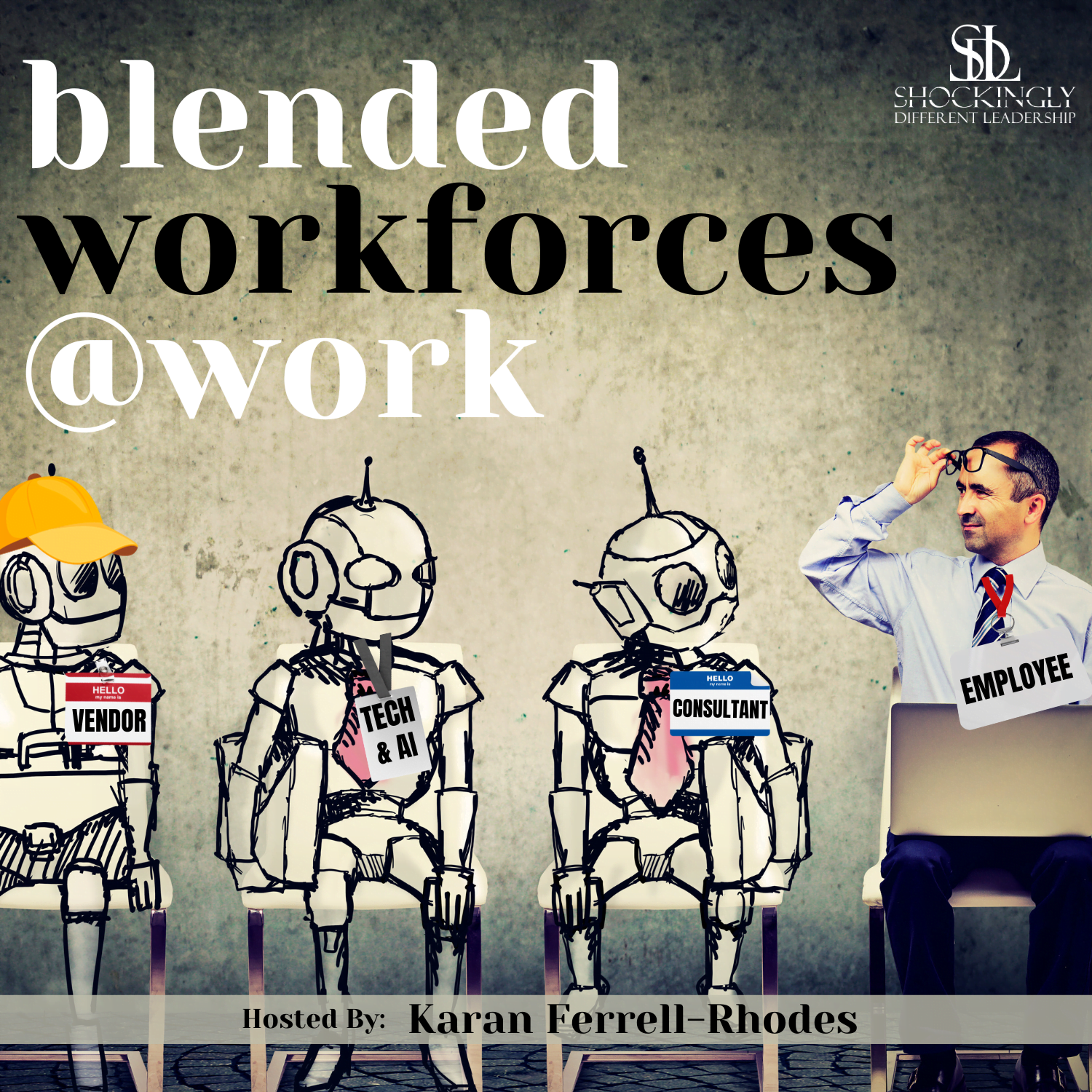
Posted by
SDL Media Team
Rather view our video podcast?

WHAT TO LISTEN FOR:
- What are the advantages of blended workforces?
- What challenges might companies face with blended workforces?
- How can companies overcome challenges associated with blended workforces?
- What are the essential factors to consider when designing compensation and incentives?
- How might the field of compensation evolve in the future?
- How can strategic decision-making contribute to extending the workforce?
“Vendors and suppliers should reference their historical experience and what resources were necessary for them to be successful.”
FEATURED TIMESTAMPS:
[02:32] Jesse’s Life Beyond Work
[03:47] Executive Compensation and HR Strategy
[05:10] The Power and Challenges of Implementing a Blended Workforce
[10:06] Building Effective Blended Workforce Strategies
[13:42] From Employee to Independent Contractor
[19:58] Signature Segment: Jesse’s entry into the LATTOYG Playbook: Tailoring Executive Compensation Strategies for Business Success
[22:34] Future of Compensation and Workforce Dynamics
[29:59] Signature Segment: Jesse’s LATTOYG Tactics of Choice: The Power of Strategic Decision Making
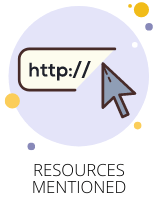
ABOUT JESSE MESCHUK:
Jesse Meschuk is a Human Capital Advisor and career and HR expert with more than 20 years of consulting and human resources experience. Jesse specializes in helping companies define and execute their human capital strategy across the entire employee value proposition in a wide variety of industries, including technology, entertainment, gaming, retail, hospitality, manufacturing, and sports.
LINKS FOR JESSE:
- Website: jessemeschuk.com/
- LinkedIn: linkedin.com/in/jesse-meschuk/
ADDITIONAL RESOURCES FOR YOU:

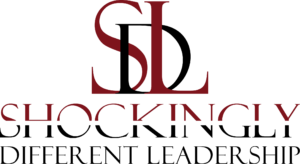
Episode Sponsor
SDL is the go-to firm companies trust when needing to:
- supplement their in-house HR teams with contract or interim HR experts
- implement leadership development programs that demonstrate an immediate ROI and impact on the business

Episode 8 | How Vendors Can Ascertain Client Needs Before the RFP with Jesse Meschuk
Jesse Meschuk 00:01
I’d say, drawbacks, you know, it can be hard in a real blended workforce to maintain one cohesive culture and make sure everybody stays connected, right? You know, back in the day, when 95% of your workforce was in the office, you could have a big meeting or get the team together in pretty short order. But now that requires a lot more coordination.
Karan Rhodes 00:01
Blending workforces are one of the hottest talent strategies today, where employers are using a mix of traditional employees with external resources like independent contractors, coaches, consultants, vendors, and technology solutions, all in order to enhance competitiveness, ensure cost flexibility, and expedite business goals. But how are the successful companies infusing blended workforces into their business strategy? And what are the critical success factors and pitfalls to avoid during implementation? And on the flip side, what does it really take for suppliers to improve their chances of finding and landing contract opportunities? The devil is in the details, my friends! I’m your host, Karan Ferrell Rhodes, and it’s time to get smarter about Blended Workforces at Work! Hello, my dear superstars Welcome to another episode of the Blended Workforces at Work podcast. I have such an exciting guest today that we’re going to talk about all things pro and con about blended workforces, and I’m just absolutely thrilled to have on today’s show Jesse Meschuk Chuck. But he is principal at Exequity. And he has a lot of other specialties and expertise that you can learn more about him is at Jesse masscec.com. But he we grabbed his time so that he can talk with us about blended workforces today. So welcome to the sheds. YesI.
Jesse Meschuk 01:36
Thank you, Karen. Good to be here and happy to have an opportunity to chat.
Karan Rhodes 01:39
Absolutely
Jesse Meschuk 01:40
You did great on the last name.
Karan Rhodes 01:42
Really? Ok. That sounds great. Well, listeners, I definitely want you to make sure you check out the show notes after the episode because we have a lot of great links and information about Jesse. But we’re gonna dive right in because we only have a limited amount of time with him to talk about blended workforces. But before we do so, Jesse, as much as you feel comfortable, we’d love to know a little bit about you personally. So can you give us a sneak peek into a bit of your life outside of the world of work?
Jesse Meschuk 02:12
Yeah, so when I’m not working on various HR topics, I’m often consumed with life with two kids. So I have two girls, I’m a girl dad, one that’s 20 and one that’s 16. So amazing. Daughters in college and youngest ones in high school. So navigating that house has a lot of pets. So I have a rescue dog that we tend to spend a lot of time with. And then we’re also taking to travel. So we try to make some time to go see the sites when everybody’s not in school or working and try to fit that in. It’s not always the easiest thing to do. But yeah, so that’s, I think that’s kind of how I tend to spend the days when I’m not on a zoom or on a podcast or you know, working with clients.
Karan Rhodes 02:58
Oh, fantastic. Well, we share something in common. My family loves to travel as well. And we are just now empty nesters. So this is a whole new experience for my hubby. And I said you’re not quite there yet, but I’ll let you know how I guess.
Jesse Meschuk 03:16
Not too far away, but not there.
Karan Rhodes 03:18
Not quite there yet. Yea, absolutely. And if you don’t mind, just quickly, can you share with the audience what you all do at executive? Yeah, so
Jesse Meschuk 03:28
Exequity is an executive compensation firm. So they advise both boards and management teams on a wide variety of executive compensation issues, you know, anything from PE levels to PE design, as well as you know, governance issues, technical tax and accounting considerations, that sort of thing. And then, just given my experience, I also work more broadly across the arena of human resources. So everything from talent development and recruitment, to succession planning to workforce planning, HR strategy, kind of you name it. So I tend to to have a broad array to help people out with whatever their challenges are.
Karan Rhodes 04:08
Oh, that sounds awesome. And doesn’t sound like you have many downtime in a day. So or much downtime today. With all of that, well, let’s get started and dive deep because we had chatted just a little bit and I know that you’ve had quite a perspective and experience, especially with us both being I will say in the HR umbrella are the people and workforce umbrella, if you will. So I’m just curious from your perspectives. What do you think is the power of using blended workforces? And then also, on the flip side, what challenges make them hard to implement from your observation and experience?
Jesse Meschuk 04:51
Yeah, well, I think blended workforce is you know, first let’s kind of talk about what that means, right? So you could have a blended workforce that are A mix of full time staff, part time staff, independent contractors, people that are working both in and outside us remote workers technology you employ. So there’s there’s a, it’s a pretty wide spectrum. And I think the first advantage is it really helps solve what is a pretty protracted and pretty difficult workforce shortage, you know, that exists right now in the US, which I’m happy to speak to a little bit more about kind of why that is. But you know, there’s a pretty, it’s pretty difficult right now across many fields to find the talent you need. And so if you decide that you can go the route of a blended workforce, you’re able to tackle those shortages, in a better way. And often in a way that better that’s flexible to kind of suit your needs. I’d also say, you know, when you employ this in certain ways, you also get a variety of different perspectives. So, for example, you might have people who are older employees who have maybe unretired, and bring a wealth of experience from you know, a number of different jobs, and that can help kind of your younger workforce, try to learn and benefit from the wisdom from, you know, many years of work, I’d say, it’s also you tend when you get a more flexible workforce, or you have a mix of maybe people that are working remotely to people that are working part time, you tend to get a more diverse workforce. So you get a lot of variety of perspectives and experience there. And that tends to drive a more innovative workforce, a lot of companies now trying that you can work remotely mixing talent in and outside the US. So that also gives you some additional points of view. And then I’d say, you know, we’ve really seen in the last year to 18 months, such an influx of tools and technology that can help automate work that created an opportunity to where people are able to streamline some of the more transactional work elements and put more into the human aspect that requires actual interaction, and then critical decision making. And so that’s, I think, another key benefit, I’d say, drawbacks, you know, it can be hard in a real blended workforce to maintain one cohesive culture and make sure everybody stays connected. Right, you know, back in the day, when 95% of your workforce was in the office, you could have a big meeting or get the team together in pretty short order. But now that requires a lot more coordination. It’s hard to do that. And as organic away, a lot of us spend most of our lives at work and with our work colleagues, but when you’re in a more blended environment, it’s also harder to make kind of the social connections that are often really critical to being the oil in the gears there to help things work more fluidly. So I’d say that’s another drawback. I’d also say that, you know, it is sometimes more difficult to do creative work, like brainstorming over video is just not the same as being face to face. And so that can be also a little bit more difficult. A lot of companies have been working on how to tackle some of that, too. So just kind of thinking through the main challenges. Those are some of them.
Karan Rhodes 08:17
No, no, absolutely spot on. And I totally agree with everything you said. And one other thing that I’m seeing in the workforce is that a lot of companies and organizations approach blended workforces hazardly like they don’t think about factoring into their holistic people and talent or resource strategy. Meaning sometimes they’ll if they, they’ll need a certain bit of expertise. And then they’ll say, hey, well, let’s look and see if we can bring in a consultant or contractor to help. But they haven’t really factored in, either, to your point, onboarding, cultural fit collaboration. They haven’t taught managers how to how to infuse external talent and to their team without crossing the IRS boundaries. Belief and then, you know, how to, and who to give access to what and what technologies and that kind of thing? So my question to you is, in your experience, have you seen companies do well with creating a warm blooded Workforce Strategy? And if you don’t have any context for that, in your opinion, how important is a holistic view into how you’re going to use blended workforces connected to the overall business strategy? Y
Jesse Meschuk 09:47
eah, really good question, Karan. So I would say you know, I have a decent number of clients in entertainment and technology. And so in entertainment in particular, there’s a pretty good mix of full time staff and in dependent contractors. And so I’d say there, I have seen a couple things that have tended to work well to help create that more cohesive culture and environment and make sure that your independent contractors are just as up to speed and as productive and as engaged as maybe full time staff would be, that’s to, you know, honestly start to treat them like you would any other full time employee. So when you’re going to have staff like that, start, make sure you do a full, like you said, full onboarding program, helping them understand what’s the company and the direction and the strategy you’re aiming for? What’s the history of the organization? How does their role player play a bigger role in what the company is trying to accomplish? Thinking about providing them the right opportunity to participate in all of the variety of company events and initiatives so that they have the same amount of context, think about, you know, may not necessarily be appropriate for them to have a manager as a independent contractor, but they often do need the right touch points in the organization to be providing them the right feedback on what’s going on, and their work, what the goals need to be moving forward for them, what might be changing in the organization that could impact their work. And so having a really well thought through support structure in the company, that’s, you know, what I’ve seen is worked pretty well. And then I’d also say, you know, these can often be situations where you don’t just have an independent contractor that comes and works for you for three months, and they’re gone, right? In entertainment, you might be working with those people for 567 years, intermittently. So how do you create the right long term relationship, make sure that you’re treating them fairly and equitably? All those things that we’re trying to do within a company, you want to broaden your reference point, so that you’re thinking about independent contractors, and often suggest to HR leaders that they think about the workforce that they manage to not just be the employees, but also this group as well. And so that’s just a couple of things I would call out.
Karan Rhodes 12:11
Yeah, absolutely. I totally agree with that. And, you know, also, I see a lot of suppliers or contractors or those that are in the external workforces side of the table, sometimes struggle with working with established companies, because especially the solopreneurs, or the very, very small businesses, because people may have left, say, corporate, and were excellent at what they did there, and decided to hang a shingle to be on the supplier vendor side of the house now, but ended up finding out they’re not quite ready, because they don’t have the same infrastructures they had when they were in corporate. So having worked, you know, how did experience watching such vendors. Do you have any recommendations or thoughts about how suppliers can get themselves ready or think about how they can be the final candidate? You know, to land that that opportunity because there’s a business behind your business in addition to the work that you do, right?
Jesse Meschuk 13:23
Yeah, yeah, the operational infrastructure underneath that can sometimes be a lot more complex than people were thinking about.
Karan Rhodes 13:30
Yeah,
Jesse Meschuk 13:31
They spent a lot of time on that. So I think what I would recommend, in that case, if someone’s looking to start, for example, their own consulting business, or they’re going to be a supplier or vendor, they’re going to have many clients with that kind of relationship. The first thing I would do is reference their historical experience and what resources were necessary for them in order to be successful. Often, these individuals already have a pretty established network of companies they’ve worked at before. So be proactive and reaching out to them and say, Hey, as you guys are starting to think about when you make contractor decisions or vendor decisions, what kind of things are important to you in the decision making process? So almost like asking what’s going to be important in your RFP, before the RFP ever gets to you right now? Right? Yeah. What sort of things do you need from an IT security point of view? You know, what sorts of technology platforms are going to be necessary? How often should I be thinking about traveling and how that might work? And how does your accounts payable process work? And, you know, invoicing and all of these things that sometimes feel like they are secondary concerns to the actual core work, yeah, important to get those nailed down. So I would recommend, you know, leveraging their connections to ask all that upfront, and I think they’ll end up saving a lot of hours on the back end of the process if they set this up, right.
Karan Rhodes 14:58
Oh my god, that that is pure gold advice right there. Because I’ll even say when I first left, I thought I had done that. But I did enough to learn about how to work with smaller and mid level companies. But I left wanting to target enterprise level companies. And I did not realize the complexity, that working with your fortune five hundreds, it’s a whole nother world and your mom and pop shops, if you will, there’s a lot of more T’s across eyes, the dot things that they they look for, and a lot more contracting and paperwork.
Jesse Meschuk 15:38
That’s right.
Karan Rhodes 15:39
And it was a real eye opener, you know?
Jesse Meschuk 15:41
For sure. And I think, you know, one of the good things now about the move toward independent contractors, because there’s so many of them now is there are a lot more tools and resources that exist for people in that position than there used to be. So, you know, leveraging resources that you might find on, for example, places like LegalZoom, you know, they’ve set up, like, their whole mission of their business is to help the solo solo printer. And so, you know, let’s say you need to set up contracts, how do you do that you need to establish your own entity, and deciding which one makes sense and getting it registered. That’s all stuff that seems really hard. But if you get the right technology partners can make this a much smoother process. So yeah.
Karan Rhodes 16:33
Absolutely. So let me switch it to you a little bit and just say, I know you do a lot of human capital advisement, and what areas do you go deep and concentrate on? What are your areas of specialty?
Jesse Meschuk 16:46
Yeah, well, I, as I mentioned, you know, working at exe equity tends to be a lot of work and executive compensation. So I do a decent amount on incentive plan design, thinking about like annual cash incentive structures, or equity programs, and how those work and with the economy having recently gone through a difficult period, if your pay is highly structured based on equity and stock prices, that’s been a difficult thing. So how to navigate that and still have something that’s engaging for your workforce. So I spent a decent amount of time on that. I also spend a decent amount of my time helping think through overall workforce strategy. So how do we find the talent that we need? Where’s it located? How do we structure our organization? What’s the right organization designed to be thinking through? How do we go find some of those key leaders and key talent segments that historically have been difficult? I spend a decent amount of time on that. Thinking about things like what are the right culture and engagement programs to drive performance in the company? Yeah, you know, we have increasingly complex organizations and blended workforces now. So how do you keep everybody engaged? How do you keep everybody informed? And how do you help them to make sure they’re focused on the things that matter? Most? So what’s your company goal setting process? And what’s your feedback mechanism, so they’re getting performance on where they can improve and less about evaluative mechanisms, but more development oriented, you know, we’re seeing so many new disruptions, particularly due to things like AI, so your employee workforce be properly responsive, and trained, and re skilled. And these are all big challenges companies are having. So I find myself pretty busy in a lot of those.
Karan Rhodes 18:33
It sounds like it. I know it SDL we work a lot with private equity back to high growth companies. And that is an area is just bringing, you know, to mind some contracts we have right now that executive compensation and compensation overall is a big, big piece of what they’re trying trying to target because they did great in their startup mode, as they are now private, equity backed and now are being required to get some infrastructure in place. That’s a huge knee, they don’t have a lot of the ones we work with. And they’re very significant making tons of money, but they don’t have like, the right you know, pay skills and you know, all of that, that goes executive compensation, and they’re trying to land all that to good infrastructure. But who is your target market that you all focus on? Is there a range or a specific group that you focus on?
Jesse Meschuk 19:38
You know, at Exequity, it’s pretty industry agnostic. I tend to have a lot of clients in technology and entertainment and sports just due to my own background, but the firm itself is is definitely broader. And we have clients in pretty much all industries. So it’s and when you think about a field like competition ation and incentives, it’s it’s, there are definitely things that are industry specific. But in general, from a discipline point of view, this is all about human behavior, and how do you motivate the right kind of results? Right? And so that tends to be cross industry. And so it’s really more about understanding what the business needs are, what’s the strategy of the organization, or what you’re trying to achieve? And that was the right structure to do that, whether it’s your pay positioning, and who your peer companies are to, you know, what are the right metrics that you want to measure to drive performance? How do you balance, driving performance with the need to retain key talent, those are all key issues. So it’s a really interesting field that I find rewarding to help companies think through.
Karan Rhodes 20:48
Yea. And it’s so needed, so deeply needed. Now, I usually don’t throw curveballs and I hope this is not one. So feel free to throw tomatoes at me if it is. But you know, as I continuously curate, you know, insights and additional information about, you know, blended workforces around the world. I can imagine a day where those that are in the compensation feels like you all are, and those that are in procurement, you know, that focus on suppliers and vendors and what have you work even more closely together than you might now? Because when I always say people strategy is business strategy. And as they are thinking through who’s doing the work, where and how and all of those answering those questions, as they’re managing budgets and resources, I would think the impact on the p&l, we’ll need to be having an even closer look on taken at it. So I guess my question to you is, do you ever foresee that happening? Or do you think that traditional looks at count employee compensation and the procurement office that focus on external workforces will still probably stay mostly separate?
Jesse Meschuk 22:14
It’s a really good question. I’m not sure I have a crystal ball on this one.
Karan Rhodes 22:17
No, that’s okay. It’s just asking your perspective you know.
Jesse Meschuk 22:21
I would say, a couple thoughts. I think that, to the extent we start to see more and more people move toward an independent contractor situation where they are conducting work with many different clients, as that, you know, continues to grow. I mean, I think the last stat I read was that there’s something like, like, it’s it’s a huge number in terms of the number of people that are doing independent contractor work.
Karan Rhodes 22:53
Oh, yes. Huge. Yeah.
Jesse Meschuk 22:55
I think the number I saw was something like 50 million people think
Karan Rhodes 23:01
is a little bit more than that does a tad up. But yeah, right around that area.
Jesse Meschuk 23:05
which is a pretty high number.
Karan Rhodes 23:06
Yeah.
Jesse Meschuk 23:08
As we continue to see that grow. Could you see a scenario in which let’s say you have a mix of employees and independent contractors that the field and compensation would start to look at both? Because you’re individually contracting effectively with both of those groups.
Karan Rhodes 23:23
Right
Jesse Meschuk 23:24
I think that you can see some merging there.
Karan Rhodes 23:25
Yeah.
Jesse Meschuk 23:26
I’d say the, to the converse to that, you know, the law is continuing to move in a direction of everyone, unless they have multiple clients and pass a pretty extensive test should be treated as an employee, right? Even if you have multiple clients, you might be an employee of many different companies. So if it continues to go that direction, then you might, you know, kind of all be captured from that perspective. So I think one thing that’s interesting overall in the field, though, right now is there is an explosion of tools and technology and platforms that are gathering and aggregating this data companies are increasingly participating real time services where they will confidentially and securely share information, but it can then be used by companies to kind of real time understand what market rates are per position. And you’re also seeing that data be increasingly shared publicly. Yeah, so posting of salary ranges and job descriptions and people aggregating their own information and submitting that online. And so I actually think we’re in an area where the power of that data is increasingly with companies and with individual employees.
Karan Rhodes 24:37
Yeah.
Jesse Meschuk 24:37
So I actually think the transition is going to be really around, umm, you know, the compensation field will be less about what’s the competitive pay rate, because that data will be increasingly available to everyone and more about what’s the right way to pay people? What’s the right structure to employ and what are the right incentives to create and designs that will highly engage your workforce I think that’s where we’re seeing I see the field continue to evolve.
Karan Rhodes 25:04
Evolve. Yeah, I can see that definitely see that as well. I was speaking to a Chief Human Resources Officer. And we were talking about Linda workforces, and they’re trying to build a stronger strategy around it and get her exactly. The C suites minds around it. And one of the things they were considering is, because of the, we always say war on talent, but there are true talent shortages, as you mentioned, especially in the US. They’re trying to extend those individuals who are nearing employment, they’re trying to keep them and they’re creating a special program to help them transition to either part time or to contractor status, independent on what they choose, they work less hours and dependent on what they choose, if you need to go to the part time there’ll be limited benefits, if they really want to cut the cord and just be a contractor on certain things, then they have a whole program around that, as well. But their number one goal is to try to keep these high knowledge individuals in the company because they have the intellectual property and institutional knowledge, I should say. And they need to keep it going. Because it’s hard to find replacements.
Jesse Meschuk 26:30
Oh, yeah.
Karan Rhodes 26:31
Have you seen that as well?
Jesse Meschuk 26:32
Yeah. I mean, I think this is a really hard strategy. So you know, we think at a macro picture, the population in the US is increasingly aging.
Karan Rhodes 26:40
Yeah.
Jesse Meschuk 26:40
I think by 2035, the number of people 65 And older will outnumber children.
Karan Rhodes 26:46
Yeah. And people aren’t having as many kids these days, but either, right?
Jesse Meschuk 26:50
We’re having fewer kids. yeah, we’re producing less workers, also, young people are living longer. So for them, they have a economic reason to want to work a little bit longer, but also maybe a social reason to just maintain, you know, purpose and social connections and that sort of thing. And so finding ways that they can increasingly contribute, is great, help solve shortages of talent and retains that experience. Yeah, I would say companies thinking through that strategy on the different options, sounds smart, you know, you might have people that are willing to at that stage, they only want to come into the office a couple days a week, or they only want to work a couple of days a week. And so how do you set up structure like that, you might also find that that group can provide a lot of value, but doesn’t need to be in the office to do it and having them be remote. That’s right. How do you leverage their skills to help grow talent internally, so about a percentage of their time on mentoring, you know, if they’re a leader, that’s, you know, they’ve got 30 years experience, and they’re exiting New York organization and retiring. But they’re willing to spend 25% of their time still helping out, consider carving out some of that to to pass on the skills, right, or mentor other junior leaders that are still coming up and can benefit from that experience. So these are all really big advantages for thinking about how you might extend the timeline, a little bit.
Karan Rhodes 28:18
Absolutely. You know, I just think the world of filling that workforces. It’s, the possibilities are infinite. It’s just based on what the needs of the organization and the people are, and, you know, making sure that it’s a win win. Well, before we let you go, just see, one thing I will always love to do, you know, I read a book on leadership execution, it’s important, you know, leadership is in everything we do in life and business. And out of our research that we commissioned, there were seven, what we call leadership, execution tactics that are involved in any leadership effort that you do that are very important to do. And we love to ask our guests, you know, which of the seven really popped for you, all seven are equally as important, but we always like to be curious about which one really resonated and you were so kind to share with us that leading with strategic decision making was of interest and for my audience members that that don’t know, leadership, with strategic decision making. It’s just that it’s leading. It’s making good decisions yourself or leading a great decision making process with your team in order to achieve desired goals or priorities. So Jessie, curious minds want to know, why did leading with strategic decision making really pop for you?
Jesse Meschuk 29:37
Yeah. Well, I think that one of the most important things that you do as a leader is make the right kind of decisions for the organization. And I think really smart strategic leaders tend to leverage the collective wisdom of their team to try to think through what is the best decision and so I think In driving, significant enterprise value growing the organization, it often comes down to a few key pivots that you make. And so those can create a hugely disproportionate amount of value if you do them. Right. And so that’s why I picked that one.
Karan Rhodes 30:15
Yeah.
Jesse Meschuk 30:16
And I think the the emphasis for leaders should be on how to how do I get great at the discipline of making good decisions? Like, how do I think about that as a muscle? I’m building
Karan Rhodes 30:27
Yeah.
Jesse Meschuk 30:28
Like you do and managing your team. And just like you do, and whatever somebody’s technical discipline is the discipline of making great decisions. You know, you want to consider a variety of inputs, you want to forecast what the future could look like, you want to start thinking about the what might be options that you haven’t considered before, thinking about, and solutions, not or solutions, these are all the kinds of things that are important in making decisions. And so I’m a big believer in the power of great decisions, so…
Karan Rhodes 31:03
Oh, I love it. Well, thank you so much for sharing that. And unfortunately, that’s all the time we have for today. Jesse, I could talk to you forever. But I want to say thank you so much for the fabulous gift of your time, these incredible perspectives that you shared. And boy did I was writing up a ton. I have my notes right here. It was making notes as you were talking. So thank you so much for sharing your wisdom on the podcast today.
Jesse Meschuk 31:34
Of course. Thanks again for having me. I really appreciate it.
Karan Rhodes 31:37
And listeners, thank you too, for joining another episode of the Blended Workforces at Work podcast. We know there’s a ton of podcasts that you could be listening to and we appreciate your time as well. Please make sure that you like and subscribe to the podcast and share with just one friend so that we can expand our community so that we all can get smarter about Blended Workforces at Work. Thank you so much and see you next week. Bye. Well, that’s our show for today. Thank you again for listening to the Blended Workforces at Work podcast. You can check out the show notes, additional episodes, bonus resources, and also submit guest recommendations on our website at blendedworkforces@work.com. You can also follow me on Twitter, LinkedIn, Instagram or YouTube by searching for the name Karan Rhodes with Karan being spelled K a r a n. And if you like the show, the greatest gift you can give would be to subscribe and leave a rating on your favorite podcast platform of choice. This podcast has been a production of Shockingly Different Leadership, a global consultancy which helps organizations execute their people, talent development, and organizational effectiveness initiatives on an on-demand, contract, fractional, or project basis. Huge thanks to the SDL production and editing team for a job well done. Bye for now.

Want to be a Podcast Guest?
Check out our guest qualifications and submit our brief form to be considered.

Want Karan to be Your Podcast Guest?
- Blended Workforces & the Gig Economy
- Critical Execution Tactics of High-performing Leaders
- Entrepreneurism & Leading Your Business

Want to be a Podcast Sponsor?
All sponsorships come with a featured spot on show notes pages.
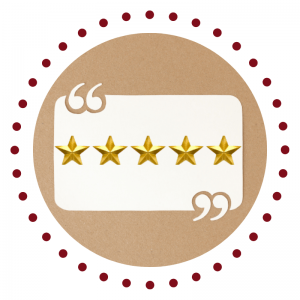
Like the Show? Please Leave a Review
If you like the show, it would mean the world to her if you left a quick review.
Your word is golden, so a HUGE thank you in advance!
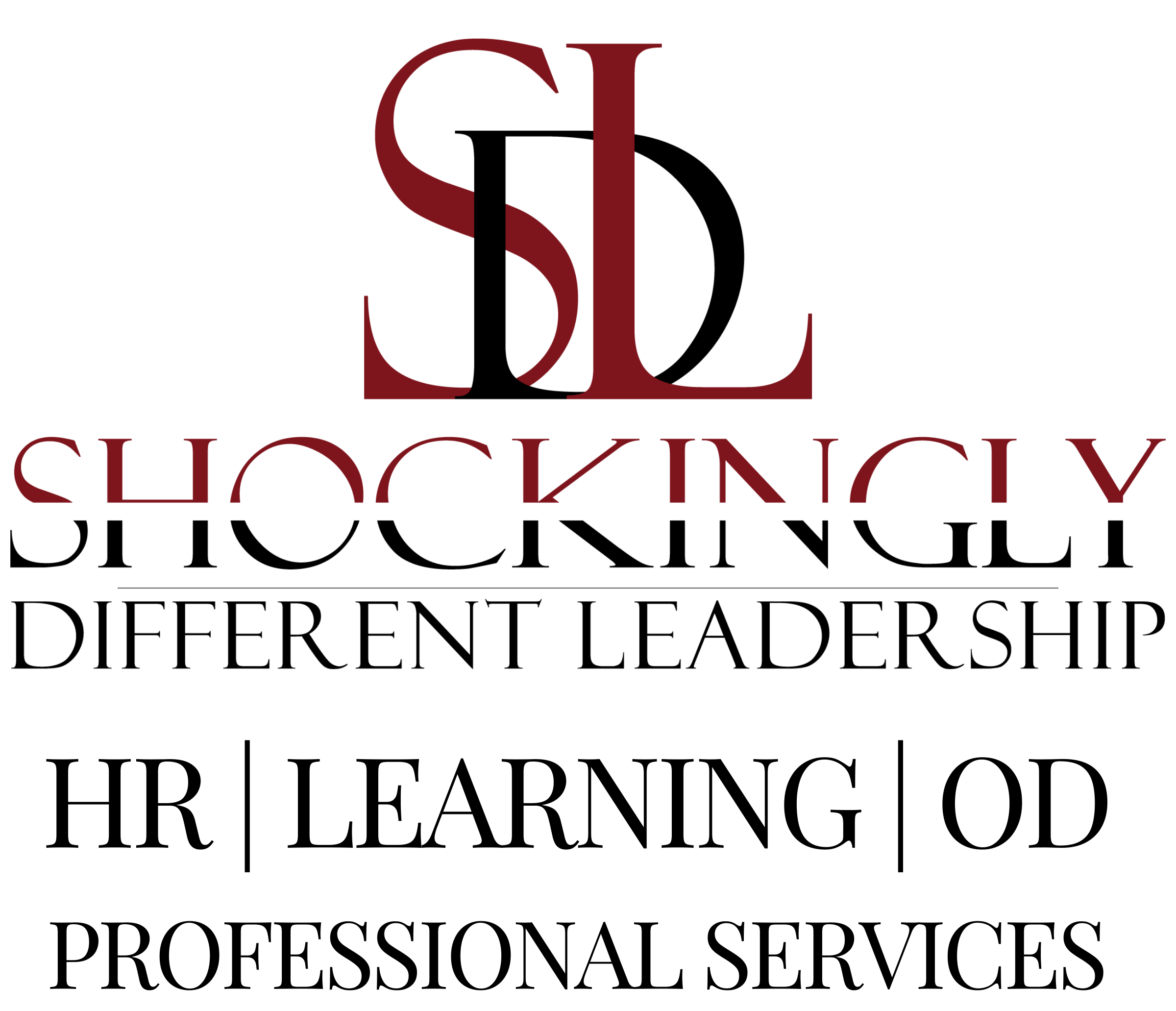
#KeepInTouch
via our podcast alerts
Subscribe now to discover why thousands of monthly listeners who are passionate about doing their best work prioritize time each week to listen to the Blended Workforces @Work podcast.
#AboutSDL
#WhereToFindUs
MAILING
4480-H South Cobb Drive
PMB 219
Smyrna, GA 30080
PHYSICAL
2121 NewMarket Parkway
Ste. 108
Marietta, GA 30067
#ContactOptions
Customer Service Email:
service@shockinglydifferent.com
Call or Text:
770-384-1103
#Office Hours
MON-FRI
8:30 AM – 6:30 PM
Weekends By Appointment

